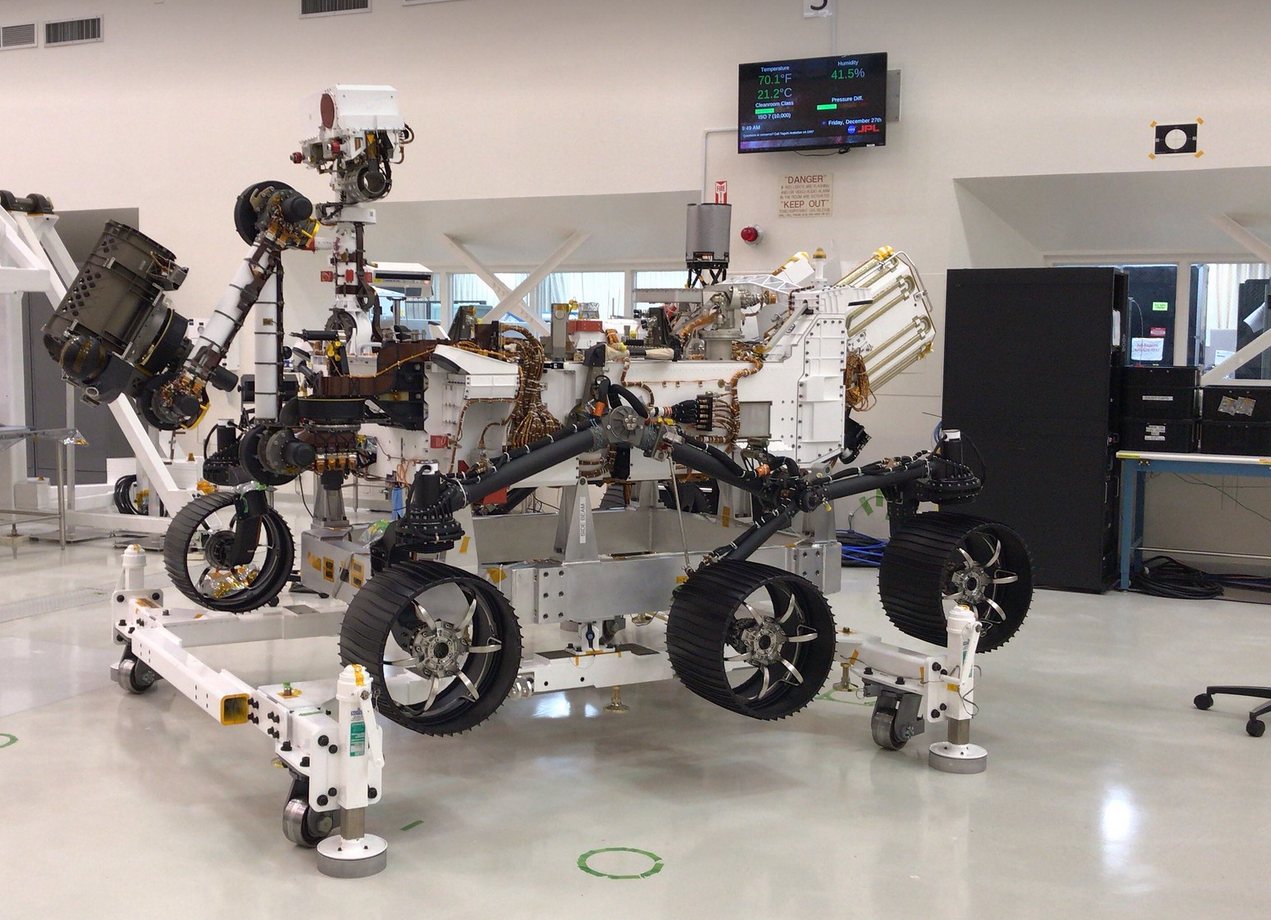NASA On The Lookout For “Signs of Ancient Life” — The Long-Awaited Mars 2020 Mission

As a holiday treat, NASA’s Jet Propulsion Lab in California opened its doors to the media to reveal their next step on the mission to the Red Planet. Journalists were able to get inside the Spacecraft Assembly Facility cleanroom and see the rover, descent stage, and other components essential to the mission. The most important part of the event was Mars 2020, NASA’s next-gen rover.
NASA’s most ambitious project is Mars 2020, which is not just the most technologically advanced platform they created up to day. Still, it will also house a variety of essential tools to detect ancient life. One of the Mars 2020 Rover Project mechanical engineers, Zach Ousnamer, stated in an interview:
“Mars 2020 is looking for signs of ancient life. We’re going to land in the Jezero Crater, which is an ancient river delta, and here on Earth, we know those are hot spots for life. So we’re going to go to one on Mars in hopes of finding life there.”
How does Mars 2020 rover work?
Think of it as a next-gen Curiosity, the previous Mars rover that has been improved and has seven new instruments onboard added Ousnamer:
“We’re flying seven new instruments. Some of them are similar to those flown on Curiosity but upgraded. We have, for instance, a new instrument, MOXIE, which is generating oxygen on the surface of Mars. There’s also a tool called SuperCam, which will rest on “on the top of the head of the remote sensing mast, doing laser-induced breakdown spectroscopy.”
But the essential tool on the Mars 2020 rover is the Adaptive Caching Assembly, which is the equivalent of a Swiss watch of tools. Its mission is to take samples of Mars, to put them in a canister, which would hermetically seal the samples. The cartridges will remain on the surface of Mars for a future mission, which will have to collect and send them back to study on Earth.
Mars 2020 mission to find signs of ancient alien life
The Flight System Manager for Mars 2020, Ray Baker explained the role of the Descent Stage and why it is also an essential part of the 2020 mission.
“The descent stage is the power of our vehicle during the EDL, and it provides all of the guidance and propulsion that is needed to get the surface. It also has instruments that help us fly. It has an inertial measurement unit. It has an antenna, a radar, in the front so that we can actually see the ground and measure our velocity and altitude.” In the interview, he also explained why entering Mars is terrifying, and why they call it “seven minutes of terror:”
“It’s a long string of events where we go from about 12,000 miles per hour when we hit the atmosphere down to about two miles per hour on touchdown. And everything has to work. There are many many many systems. Basically, the whole spacecraft has to work together for virtually the first time perfectly.” Mars 2020 rover is now completed and ready to be tested in Florida before launch time. The mission is expected to launch between July 17 and Aug. 5, with a touchdown in 2021.
0 comments